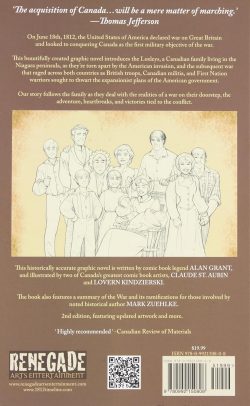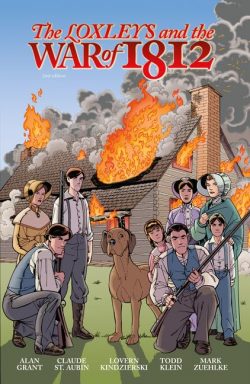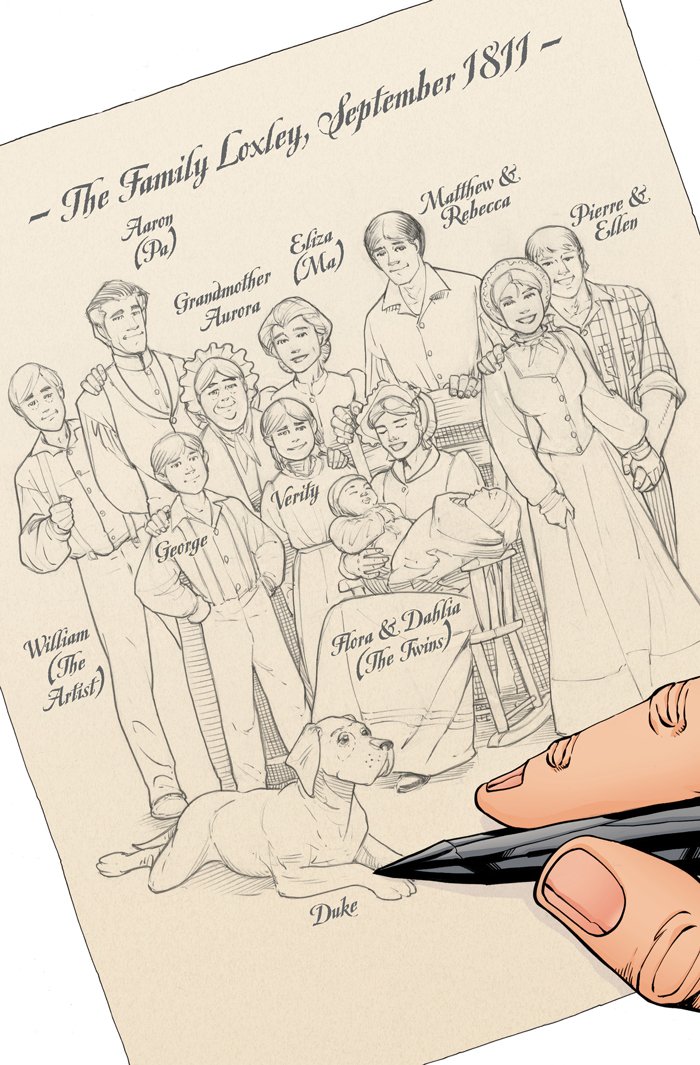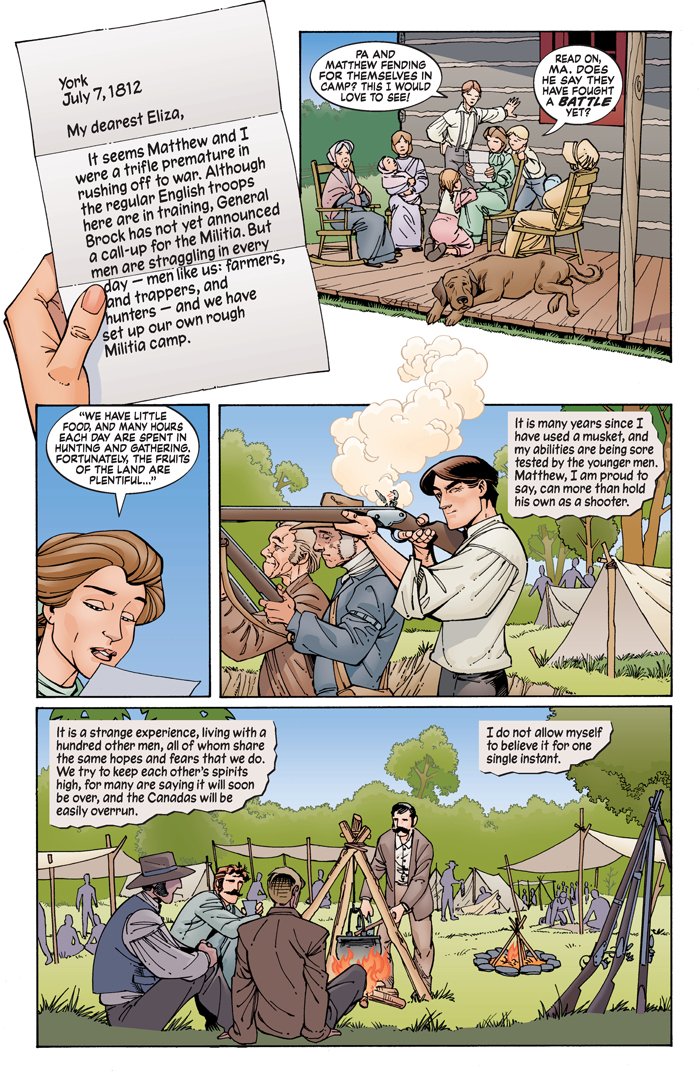
By Forrest J. Ackerman, Don Glut, Nicola Cuti, Bill Parente, R. Michael Rosen, Al Hewetson, Terri Abrahms, Nick Beal, Bill Warren, Richard Carnell, Jack Erman, T. Casey Brennan, Gardner F. Fox, Vern Burnett, Larry Herndon, Buddy Saunders, Doug Moench, Tom Sutton, Billy Graham, Reed Crandall, Neal Adams, Ernie Colon, Billy Graham, Mike Royer, Tony Tallarico, Jerry Grandenetti, Bill Fraccio, Dick Piscopo, William Barry, Jack Sparling, Ed Robbins, David St. Clair, Jeff Jones, Dan Adkins, Frank Bolle, Frank Frazetta, Vaughn Bodé, Ken Kelly Bill Hughes, Larry Todd & various (Dynamite Entertainment)
ISBN: 978-1-60690-175-5 (HB/Digital edition) 978-1524126506 (TPB)
This book includes Discriminatory Content produced in less enlightened times
After years of stifling restriction, the American comic book industry finally started to break out of a self-imposed straitjacket in the mid-1960s. Kids of the Counterculture had begun creating and disseminating material relevant to their lives in self-produced “Underground Commix” whilst other publishers sought other ways around the draconian Comics Code applied to comic books.
The most elegant solution was the one chosen by Jim Warren, who had originally established himself with black & white B-Movie fan periodical Famous Monsters of Filmland and satire magazine Help! In 1965 he took his deep admiration of the legendary 1950s EC Comics to its logical conclusion: reviving the concept of anthology horror short stories and pitching them at older fans of the new generation. Of course that actually meant all us kids under 10…
Creepy was stuffed with clever, sardonic, tongue-in-cheek strip chillers illustrated by the top artists in the field (many of them ex-EC stars). Warren circumvented the US’s all-powerful Comics Code Authority – which had ended EC’s glory days and eventually their entire comics line – by publishing his new venture as a newsstand magazine. It was a truly no-lose proposition. Older readers didn’t care to be associated with “kid’s stuff” comic books whilst magazines had tempting cachet (i.e. mild nudity and a little more explicit violence) for readers of a transitional age; moreover the standard monochrome format was a quarter of the costs of colour periodicals.
Creepy was a huge and influential hit, especially among the increasingly rebellious, Rock ‘n’ Roll-crazed teen market, frequently cited as a source of inspiration for the nascent commix underground and furiously feeding on growing renewed public interest in the supernatural. In true Darwinian “Grow or Die” mode, Warren looked around for new projects, following up with companion shocker Eerie and the controversial war title Blazing Combat.
As the decade closed he launched a third horror anthology, but Vampirella was a little bit different. Although it featured the now traditional “host” to introduce and comment on the stories, this narrator was a sexy starlet who occasionally participated in stories. Before too long she actually became the hero and crowd-pulling star of her own regular feature, but that’s material for a later volume…
The other big change was that here female characters played a far more active role. They were still ornamental, prizes, victims and targets but increasingly, whether name stars or bit players, they were as likely to be the big menace or save the day. Whatever their role, though, they were still pretty much naked throughout. Some traditions must be protected at all costs.
Another beguiling Warren staple was the eye-catching painted cover fronting every issue. Here, as crafted by Frank Frazetta, Bill Hughes, Larry Todd & Vaughn Bodé, Jeff Jones & Bodé and Ken Kelly, they are the only full colour pages in an otherwise magnificently monochrome/duo-toned tome. However to be fair I must say that the reproduction on some black-&-white pages leaves much to be desired…
This massive magazine-size (216 x 32 x 279 mm if you opt for physical editions) collection gathers in their entirety the contents of the first seven issues (spanning September 1969 to September 1970). This was a crucial transitional period which saw superheroes dying out at every publishing company; replaced by a genre revival and spearheaded by a tidal wave of horror titles after the Comics Code was frantically rewritten to combat plunging sales.
This volume begins with Vampirella #1, that aforementioned painted cover and a black-&-red Frazetta frontispiece – probably scripted by Editor Bill Parente – setting the blackly humorous tone for a fearsome fangtastic fun fest. The original contents page follows – as do they all in their appropriate place. The compendium also includes every letters page and fan feature – and even nostalgia-triggering ads of the era. If you’re a modern monster fan or kit collector you’ll probably simultaneously weep and drool at the sight of these lost treasures.
The strip sensationalism begins with ‘Vampirella of Drakulon’ by Forrest J. Ackerman & Tom Sutton; introducing a planet where the rivers ran with blood and life evolved to drink it.
However, following a withering drought, Drakulon is dying. Happily for the sultry starving vampire, a ship from Earth arrives, full of people with food in their veins and a ship that can take her to where there’s plenty more.
Vampi’s role from the outset was to be another story host and for the rest of this collection that’s what she mostly is. Her role as an active adventurer didn’t properly begin for quite a while. So, here the chills continue with ‘Death Boat!’ by Don Glut & Billy Graham with the survivors of a shipwreck being picked off one by one by a bloodsucker in their midst. They perish one per night but when the mortals number just two both are still wrong about who the killer is…

Glut & master draughtsman Reed Crandall conspired on ‘Two Silver Bullets!’ as a trapper fights to save his daughter from a werewolf after which ‘Goddess from the Sea’ by Glut and Neal Adams offers a splendid treat for art-lovers: the story of a man seduced by a sea-siren was shot directly from the illustrator’s incredible pencil art. Glut & Mike Royer offer a timely Halloween warning in ‘Last Act: October!’ whilst ‘Spaced-Out Girls!’ (Glut & Tony Tallarico) sees a saucer full of saucy extraterrestrial honeys come shopping for husbands before the premier package closes with Nicola Cuti & Ernie Colon’s mindbending magical murder mystery ‘A Room Full of Changes’.
The spooky story-bonanza resumes in issue #2, opening with coming attraction featurette ‘Vampi’s Feary Tales…’ – courtesy of Sutton – after which Vampi’s putative cousin ‘Evily’ is introduced by Bill Parente & veteran horror-meister Jerry Grandenetti. Here Drakulonian émigré and Earthly sorceress climactically clash over star-billing and bragging rights…
‘Montezuma’s Monster’ is scripted by R. Michael Rosen (incorrectly credited to Glut) and illustrated by Bill Fraccio & Tallarico in their composite identity of Tony Williamsune, detailing the fate of a treasure-hungry explorer who doesn’t believe in feathered serpents whilst ‘Down to Earth!’ by Ackerman & Royer leaves the hosting to Vampirella’s blonde counterpart Draculine as our star auditions for a film role…
That theme continues in ‘Queen of Horror!’ (Glut & Dick Piscopo) wherein a B-Movie starlet uses unique and uncanny advantages to get everything she deserves whilst Cuti & William Barry reveal the tragedy of two brothers who discover a new predatory species of inland cephalopod in ‘The Octopus’. Cuti & Colon’s ‘One, Two, Three’ then explores the power of love in a world of robots and Glut & Graham render a ‘Rhapsody in Red!’ with weary travellers fetching up at a lonely house to deliver a big surprise to the resident vampire…
The third issue augmented ‘Vampi’s Feary Tales…’ with correspondence section ‘Vampi’s Scarlet Letters’ before ‘Wicked is Who Wicked Does’ features the return of Evily in a short shocking battle against ogres by Parente & Sutton. Al Hewetson & Jack Sparling count ‘4- 3- 2- 1- Blast Off! To a Nightmare!’ in the tale of a spaceship full of 24-hour party people who end up as hors d’oeuvres for something very nasty even as ‘Eleven Steps to Lucy Fuhr’ (by Terri Abrahms [story]; Nick Beal [adaptation] and art by Ed Robbins) sees many men drawn to a bizarre bordello and a sinister fate… until the unlikeliest of saviours takes a hand.
‘I Wake Up… Screaming!’ is an all Billy Graham affair as a frightened girl is made aware of her true nature in a sci fi chiller whilst Cuti & Piscopo mine mythology to deliver a salutary tale of fairy tale oppression and bloody liberation in ‘The Calegia!’ A cunning vampire meets his lethal match in Graham’s ‘Didn’t I See You on Television?’ after which Rosen & Sparling close the issue detailing the downfall of a vicious spoiled brat caught in ‘A Slimy Situation!’
Vampirella #4 opens on Sutton revealing past episodes of witch killing in ‘Vampi’s Feary Tales: Burned at the Stake!’ prior to Parente & David St. Clair reaching psychedelic heights in a tale of alien amazons and their deadly ‘Forgotten Kingdom’ whilst Cuti & Royer combine murder and time travel in ‘Closer than Sisters’. A city-slicker falls for a hillbilly hottie and gets sucked into a transformative shocker after trying ‘Moonshine!’ (Glut & Barry), Bill Warren & Sparling reveal the fate of a beautiful and obsessive scientist who bends the laws of God and Man ‘For the Love of Frankenstein’ and a most modern black widow asks a controlling stalker to ‘Come Into My Parlor!’ in a wry yarn by Rosen & Piscopo. Richard Carnell (story); Jack Erman (adaptation) & Sparling then close the show with a weird and nasty tale of a nobleman auditioning women for marriage in ‘Run for Your Wife!’

The fifth issue begins with the usual ‘Vampi’s Feary Tales…’ as Sutton exposes ‘The Satanic Sisterhood of Stonehenge!’ before Glut, Fraccio & Tallarico see a greedily impatient heir speed his benefactress to her ultimate end, unheeding of her beloved pets and ‘The Craft of a Cat’s Eye’. Cavemen battle dinosaurs in an arena of ‘Scaly Death’ – a visceral treat from Glut & Graham – whilst the astounding Jeff Jones lends fine art sensibilities to the murderous saga of a girl, a guy and ‘An Axe to Grind’, after which Parente & Sutton detail the crimes of a sadistic Duke whose fate is sealed by an aggrieved astrologer and astrally ‘Avenged by Aurora’…
Glut, Fraccio & Tallarico see graves robbed and corpses consumed in neat bait-&-switch thriller ‘Ghoul Girl’ whilst T. Casey Brennan & Royer reveal the solution of a bereaved husband who finds an ‘Escape Route!’ back to his dead beloved, before Glut & Sparling end it all again via an implausible invasion from the moon in ‘Luna’.
In Vampirella #6, Vampi’s Feary Tales…’ features Dan Adkins’ graphic chat on centaurs as prelude to romantic tragedy the ‘Curse of Circe!’ as Gardner Fox & Grandenetti combine to relate how a strange sea creature offers the witch’s latest conquest his only certain method of escape. Cuti & Sparling then share a story of civil war in the land of ghosts and how love toppled ‘The Brothers of Death’ whilst ‘Darkworth!’ by Cuti & Royer shows how a stripper graduates to murdered assistant of a stage magician and pulls off her own amazing trick in the name of vengeance, after which Fox & Adkins explore the lives of the recently dead with ‘New Girl in Town!’ and Vern Burnett & Frank Bolle return to gothic roots to depict embattled humans outwitting nocturnal predators by volunteering a ‘Victim of the Vampyre!’
Larry Herndon, Fraccio & Tallarico (as Tony Williamsune) get creepily contemporary as a doctor tries to fix an overdosed patient and sends him way, way out on a ‘One Way Trip!’ before Buddy Saunders & Bolle combine adultery and attempted murder in ‘The Wolf-Man’: a wickedly scientific shocker about a very different kind of feral killer…
Vampirella #7 saw Archie Goodwin join as Associate Editor and perhaps his influence can be seen as the issue experiments with a connected theme and extended tale scripted by Nicola Cuti. Graham & Frazetta start the ball rolling by explaining ‘Why a Witch Trilogy’ and Vampirella introduces ‘Prologue: The Three Witches’ before Sutton to segues into the sad story of ‘The White Witch’ who could never feel the sunlight. Ernie Colon picks up the experimental progression as ‘The Mind Witch’ trades magic for science to expose the fate of a psychic predator, after which Graham closes the deal with ‘The Black Witch’ who thought she could conquer love but failed to realise its appalling power…

After Cuti & Sutton’s palate-cleansing ‘Epilogue: The Three Witches’, Doug Moench graduates from letter writer in #3 to scripter as ‘Plague of the Wolf’ – illustrated by Bolle – tracks a bloody serial killer’s progress under the full moon and ‘Terror Test’ offers shocking psychological thrills by Rosen & “Williamsune” with more than one sting in the tail.
In ‘The Survivor’, Saunders & Colon unite to explore a post-apocalyptic world where dedicated archaeologists still struggle to escape their bestial natures and this mammoth first compilation concludes with Rosen & Grandenetti viewing ‘The Collection Creation’ with an artist who finds the wrong kind of immortality…
Stark, surprisingly shocking and packed with clever ideas beautifully rendered, this epic tome (narrowly) escapes and transcends its admittedly exploitative roots to deliver loads of laughs and lots of shocks: a tried and true terror treat for fans of spooky doings and guiltily glamorous games.
© 2012 DFL. All rights reserved.





























